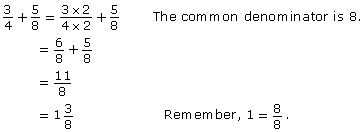Module 2
1. Module 2
1.2. Page 2
Module 2: The Imperial System
Get Started
Did You Know?
Egyptians invented paper made from the fibres of the papyrus plant more than 5000 years ago.
In ancient times, people used parts of their bodies as units of measure. You may have heard of the cubit. In Ancient Egypt, the cubit was the length of your forearm—the distance from your elbow to the tip of your middle finger.
 Try This
Try This
If possible, work with a partner to complete this activity.
In this activity you will look at some of the origins of the imperial system. In each step there is a question or two you must answer.
Step 1: Working with a partner, measure how long, in metres, a cubit is for both you and your partner.
TT 1. Is your cubit the same as your partner’s cubit?
Step 2: Use your cubit to measure the width and height of a door.
TT 2. What are the door’s dimensions in cubits?
Step 3: Another common unit of measure was the length of a person’s foot and, for smaller measures, the width of a person’s thumb just below the nail. On a sheet of paper, carefully trace your foot. (Save your tracing. You will use your tracing again later in this lesson.)
TT 3. How many thumb-widths long is the tracing of your foot?
TT 4. What fraction of your traced foot is your thumb width?
 Share
Share
It’s time to share your answers to TT 1–TT 4. Remember that sharing work is an important part of learning. Use the following tips to ensure you get all the benefits from this sharing opportunity:
- Complete the questions to the best of your ability. Make sure your answers are in a form that you can easily share them with another student or with your teacher, if so directed.
- Use your class discussion area, or another method indicated by your teacher, to post your answers and to view the work of the people you are sharing with.
- Compare your answers to the other posted answers. Identify where you have similar answers and where your answers are different. Discuss all differences between answers until you agree on the answers. If necessary, you may wish to involve your teacher in your discussion.
- Revise your answers where necessary.
Save a revised copy of your work in your course folder. Ask your teacher whether you should also save a summary of your discussion in your course folder.
The imperial system does not use cubits, but the standard foot and the inch, which is about the width of a thumb, are among the imperial system’s common units of linear measure.
Do you agree that because the size of feet and thumbs differs from person to person, standard sizes must be set in order for measurements to be consistent?
Did you find that your foot was about 12 thumbs in width, and each thumb was  of a foot?
of a foot?
To work with lengths in the imperial system, you will need to polish your skills in adding and subtracting fractions. For instance, what is ![]() ?
?
Step 4: Look at the following example.
Example 1
Add the following fractions.
![]()
Solution

 Self-Check
Self-Check
SC 1.
Solve the following.
![]()